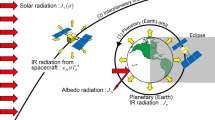Abstract
Light stimulating neural probes are rapidly increasing our understanding of neural pathways. Relocating the externally coupled light source to the probe tip has the potential to dramatically improve the flexibility of the technique. However, this approach would generate heat within the embedded probe where even minor temperature excursions could easily damage tissues under study. A COMSOL model was used to study the thermal effects of these heated probes in the brain including blood perfusion and metabolic heating, and to investigate the effect of passive methods for improving heat dissipation. The probe temperature initially decreases with insertion depth, and then becomes steady. Extending the probe beyond the heated region has a similar effect, while increasing the size of the heated region steadily decreases the probe temperature. Increasing the thermal conductivity of the probe promotes spreading, decreasing the probe temperature. The effects of insertion depth and probe power dissipation were experimentally tested with a microfabricated, heated mock neural probe. The heated probe was tested in 0.65 % agarose gel at room temperature and in ex vivo cow brain at body temperature. The thermal resistance between the probe and the neural tissue or agarose gel was determined at a range of insertion depths and compared to the COMSOL model.


















Similar content being viewed by others
References
L. Campagnola, H. Wang, M.J. Zylka, J. Neurosci. Meth. 169(1), 27–33 (2008)
I. Cho, H. Baac, E. Yoon, 2010 I.E. 23rd International Conference on Micro Electro Mechanical Systems (MEMS), pp. 995–998 (2010)
M.P. Christian, S.L. Firebaugh, A.N. Smith, Proceedings of the COMSOL Conference (2012)
J. Csicsvari, D.A. Henze, B. Jamieson, K.D. Harris, A. Sirota, P. Barthó, G. Buzsáki, J. Neurophysiol. 90(2), 1314–1323 (2003)
R.J. de Dear, E. Arens, Z. Hui, M. Oguro, Int. J. Biometeorol. 40(3), 141–156 (1997)
R. Deepthi, R. Bhargavi, K. Jagadeesh, M.S. Vijaya, SAS Technol. J. 9(2), 27–30 (2010)
M. Elwassif, Q. Kong, M. Vazquez, M. Bikson, J. Neural Eng. 3(4), 306–215 (2006)
D. Tischer, O.D. Weiner, Nat. Rev. Mol. Cell Biol. 15(8), 551–558 (2014)
E.P. Widmaier, H. Raff, K.T. Strang, Vander’s human physiology, 12th edn. (McGraw-Hill, New York, 2011), pp. 136–185
K. Wise, D. Anderson, J. Hetke, D.R. Kipke, K. Najafi, Proc. IEEE 92(1), 76–97 (2004)
M. Zhang, Z. Che, J. Chen, H. Zhao, L. Yang, Z. Zhong, J. Lu, J. Chem, Eng. Data 56(4), 859–864 (2010)
L. Zhu, A. Rosengart, Heat Transfer Eng. 29(3), 284–294 (2008)
Acknowledgments
This work was made possible by the United States Naval Academy Trident Program, an undergraduate independent research program. Technical assistance was also provided by Andrea Pais at SB Microsystems.
Author information
Authors and Affiliations
Corresponding author
Rights and permissions
About this article
Cite this article
Smith, A.N., Christian, M.P., Firebaugh, S.L. et al. Predicting and managing heat dissipation from a neural probe. Biomed Microdevices 17, 81 (2015). https://doi.org/10.1007/s10544-015-9976-3
Published:
DOI: https://doi.org/10.1007/s10544-015-9976-3




